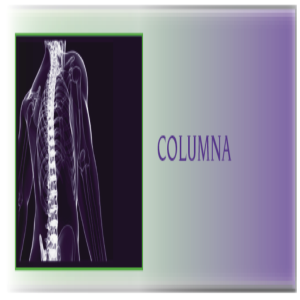Infection rate in 212 consecutive patients treated by minimally invasive lumbar tubular decompression
Main Article Content
Abstract
Level of Evidence: IV
Downloads
Metrics
Article Details
Manuscript acceptance by the Journal implies the simultaneous non-submission to any other journal or publishing house. The RAAOT is under the Licencia Creative Commnos Atribución-NoComercial-Compartir Obras Derivadas Igual 4.0 Internacional (CC-BY-NC.SA 4.0) (http://creativecommons.org/licences/by-nc-sa/4.0/deed.es). Articles can be shared, copied, distributed, modified, altered, transformed into a derivative work, executed and publicly communicated, provided a) the authors and the original publication (Journal, Publisher and URL) are mentioned, b) they are not used for commercial purposes, c) the same terms of the license are maintained.
In the event that the manuscript is approved for its next publication, the authors retain the copyright and will assign to the journal the rights of publication, edition, reproduction, distribution, exhibition and communication at a national and international level in the different databases. data, repositories and portals.
It is hereby stated that the mentioned manuscript has not been published and that it is not being printed in any other national or foreign journal.
The authors hereby accept the necessary modifications, suggested by the reviewers, in order to adapt the manuscript to the style and publication rules of this Journal.
References
2003;15:E14. https://doi.org/10.3171/foc.2003.15.3.14
2. Olsen MA, Mayfield J, Lauryssen C, Polish LB, Jones M, Vest J, et al. Risk factors for surgical site infection in
spinal surgery. J Neurosurg 2003;98(2 Suppl):149-55. https://doi.org/10.3171/spi.2003.98.2.0149
3. Collins I, Wilson-MacDonald J, Chami G, Burgoyne W, Vineyakam P, Berendt T, et al. The diagnosis and
management of infection following instrumented spinal fusion. Eur Spine J 2008;17(3):445-50.
https://doi.org/10.1007/s00586-007-0559-8
4. Valentini LG, Casali C, Chatenoud L, Chiaffarino F, Uberti-Foppa C, Broggi G. Surgical site infections after
elective neurosurgery: a survey of 1747 patients. Neurosurgery 2008;62(1):88-95.
https://doi.org/10.1227/01.NEU.0000311065.95496.C5
5. Olsen MA, Nepple JJ, Riew KD, Lenke LG, Bridwell KH, Mayfield J, et al. Risk factors for surgical site infection
following orthopaedic spinal operations. J Bone Joint Surg Am 2008;90(1):62-69. https://doi.org/10.2106/JBJS.F.01515
6. Pappou IP, Papadopoulos EC, Sama AA, Girardi FP, Cammisa FP. Postoperative infections in interbody fusion for degenerative spinal disease. Clin Orthop Relat Res 2006;444:120-8.
https://doi.org/10.1097/01.blo.0000203446.06028.b5
7. Friedman ND, Sexton DJ, Connelly SM, Kaye KS. Risk factors for surgical site infection complicating
laminectomy. Infect Control Hosp Epidemiol 2007;28:1060-5. https://doi.org/10.1086/519864
8. Weinstein MA, McCabe JP, Cammisa FP Jr. Postoperative spinal wound infection: a review of 2,391 consecutive
index procedures. J Spinal Disord 2000;13(5):422-6. https://doi.org/10.1097/00002517-200010000-00009
9. Fang A, Hu SS, Endres N, Bradford DS. Risk factors for infection after spinal surgery. Spine (Phila Pa 1976) 2005;30(12):1460-5. https://doi.org/10.1097/01.brs.0000166532.58227.4f
10. Kanayama M, Hashimoto T, Shigenobu K, Oha F, Togawa D. Effective prevention of surgical site infection using a Centers for Disease Control and Prevention guideline-based antimicrobial prophylaxis in lumbar spine surgery. J Neurosurg Spine 2007;6:327-9. https://doi.org/10.3171/spi.2007.6.4.7
11. Shousha M, Cirovic D, Boehm H. Infection rate after minimally invasive noninstrumented spinal surgery based on 4350 procedures. Spine (Phila Pa 1976) 2015;40(3):201-5. https://doi.org/10.1097/BRS.0000000000000690
12. Brodano GB, Martikos K, Lolli F, Gasbarrini A, Cioni A, Bandiera S, et al. Transforaminal lumbar interbody fusion in degenerative disk disease and spondylolisthesis grade I: minimally invasive versus open surgery. J Spinal Disord Tech 2015;28(10):E559-64. https://doi.org/10.1097/BSD.0000000000000034
13. O’Toole JE, Eichholz KM, Fessler RG. Surgical site infection rates after minimally invasive spinal surgery.
J Neurosurg Spine 2009;11(4):471-6. https://doi.org/10.3171/2009.5.SPINE08633
14. Calderone RR, Garland DE, Capen DA, Oster H. Cost of medical care for postoperative spinal infections. Orthop Clin North Am 1996;27(1):171-82. https://pubmed.ncbi.nlm.nih.gov/8539047/
15. Fessler RG, O’Toole JE, Eichholz KM, Perez-Cruet MJ. The development of minimally invasive spine
surgery. Neurosurg Clin N Am 2006;17(4):401-9. https://doi.org/10.1016/j.nec.2006.06.007
16. Ee WW, Lau WL, Yeo W, Von Bing Y, Yue WM. Does minimally invasive surgery have a lower risk of surgical site
infections compared with open spinal surgery? Clin Orthop Relat Res 2014;472(6):1718-24.
https://doi.org/10.1007/s11999-013-3158-5
17. Al-Khouja LT, Baron EM, Johnson JP, Kim TT, Drazin D. Cost-effectiveness analysis in minimally invasive spine
surgery. Neurosurg Focus 2014;36(6):E4. https://doi.org/10.3171/2014.4.FOCUS1449
18. Bible JE, O’Neill KR, Crosby CG, Schoenecker JG, McGirt MJ, Devin CJ. Microscope sterility during spine
surgery. Spine (Phila Pa 1976) 2012;37(/):623-7. https://doi.org/10.1097/BRS.0b013e3182286129

